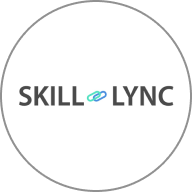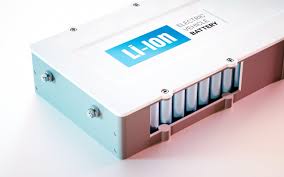Modified on
05 Feb 2021 12:35 pm
Understanding Lithium-Ion batteries in the EV domain - Part 1

Skill-Lync
This article is part 1 of a three-part series and it aims to enlighten students on the uses and features of Lithium-Ion batteries, hence represented as - Li-ion batteries in electrical engineering. Students can expect to learn about the key concepts and applications of Li-ion batteries.
These are a few of the most pertinent questions regarding lithium-ion batteries that will be covered in this article:
- What are Lithium-ion batteries?
- What makes these batteries suitable in the propulsion of electric vehicles?
- How does battery discharge take place in actual automotive vehicles?
Students will learn to apply theoretical background and learning outcomes to fabricate premium quality Li-ion batteries. This further engenders the students to procure hands-on experience in electrical engineering and packaged battery applications.
What Are Lithium-Ion Batteries?

A lithium-ion battery is a portable and rechargeable battery unit that helps in seamless and efficient mobility in the automotive industry. In these batteries, the negative electrodes move in the direction of positive electrodes during the discharge process to facilitate propulsion in electric vehicles.
The Twin Perspectives on Battery Technology
These twin perspectives offer a detailed analysis of Li-ion batteries and their suitable usage in mobilizing electric vehicles.
Chemical Engineering Perspective (Inside Perspective)
The chemical engineering perspective is referred to it as an inside perspective because it involves the study and application of the inner dynamics of Li-ion battery fabrication.
The chemical engineering perspective examines the following procedures:
- The process of materials appropriation
- A properly channelized syndication of the gathered materials
- The manufacturing of the battery
Furthermore, the article emphasizes the different compartments of a battery. It depicts the presence of various cells in a single battery segment, which is actually a part of a typical 12V automotive battery.
Battery manufacturers like, Exide and Amaron, develop and built batteries that are used extensively in the automotive industry. The following list of factors is considered when designing a battery.
- Electrochemical fundamentals
- Electron materials
- Temperature conditions while constructing the batteries
- Battery packaging
- Form factor are taken into account during battery fabrication
Electrical Engineering Perspective (Outside Perspective)

The electrical engineering perspective is called an outside perspective because it focuses on the end-user of the battery. The electrical engineer fabricates a battery through the following procedure:
- Collecting the battery cells
- Processing these cells into usable modules
- Integration of the complete battery-package together and putting it to application
Automotive Application of Batteries

There exist two principle automotive applications of batteries:
- SLI (Starting, Lightening, Ignition)
- Propulsion
Indeed, there haven't been many propulsion batteries in the market. However, the commercialization of propulsion batteries is coming up with the advent of electric vehicle technology.
In fact, propulsion batteries accompany some opportunities and challenges for electrical engineers. To elucidate this further, you need to learn about the suitability and decisive factors involved in a battery propulsion.
What Makes a Battery Propulsive?
Net Calorific Value (NCV)
The net calorific value or NFC of different fuels depicts that conventional fuels such as petrol, diesel, CNG, etc. have a high calorific value as compared to lithium.
One litre of diesel has the highest calorific value of 10,700 W/l. As compared to this, lithium has the least NVC of 280 W/l.
Efficiency Conversion
The next factor impacting battery propulsion is the rate of efficiency conversion in fuels. According to this factor, lithium characterizes a high conversion efficiency that is around 80-90%.
This is one of the key reasons why lithium batteries is employed in the automotive industry.
While learning about Li-ion batteries, it's necessary to raise a valuable and urgent question, that is: Is the conversion efficiency good enough to have a viable solution with low NVC?
To resolve this question, you need only look at a comparative analysis of diesel Vs lithium-based propulsion.
Li-Ion Batteries Vs Diesel Fueled Motors
The process of the well-to tank and tank-to-wheel harnessing of diesel and electric energy stand important. In fact, there exists a release of carbon dioxide during the diesel extraction process.
Furthermore, the conversion of diesel energy is slow and indirect as compared to lithium energy conversion. This is because diesel energy is converted into thermal energy followed by its transformation into mechanical energy.
However, the chemical energy of lithium-ion batteries is directly converted into electrical energy, which further transforms into motion energy.
Therefore, improvised lithium battery technology makes for excellent tank-to-wheel energy conversion. This eventually makes it a cost-effective and optimized way of catering to electric vehicle transportation.
Conclusion
This article analytically presents the fundamental concepts of Li-ion battery applications for electric vehicles. It furnishes adequate knowledge-base about Li-ion batteries within a descriptive and explanatory framework.
Overall, this article explains the significance of Li-ion batteries and conceptualizes a skill-based curriculum for electrical engineers.
To delve deeper into these topics, choose the battery technology courses at Skill-Lync. To learn more about how battery technology is used in electric vehicles, you can click on this link to the second part of this blog series.
With the help of our industry-relevant curriculum, students can get the knowledge and skills they need for a successful career in hybrid electric vehicle designing.
Author
Akhil VausdevH
Author

Skill-Lync
Subscribe to Our Free Newsletter

Continue Reading
Related Blogs
The article highlights the importance of a battery management system and the work dynamics of an ideal battery cell. It illustrates the different parts of a cell and the procedure of converting a cell into a battery. This is part 3 on our series on the application of a Li-ion battery for electric vehicles. In the final part, Skill-Lync aims to shed light on the drive cycle of an electric circuit, the state of charge of a Li-ion battery followed by the fundamental parameters for an HV battery.
27 Jul 2020
In continuation of part 1 of the application of Li-ion battery for electric vehicles, part 2 of this article discusses the different types of cells, battery elements, and their various features. Read how Skill-Lync's HEV courses can help you get employed in the HEV domain. This is part 2 of Skill-Lync's series on the application of Li-ion batteries for electric vehicles. Part 1 of this series touched upon the significance of Li-ion cells for the propulsion of electric vehicles.
24 Jul 2020
Using two case studies, read about the career opportunities in the HEV domain as a Drive Development engineer. Learn about system design in detail as we at Skill-Lync explain the working of a Mahindra Scorpio powered by a microHYBRID engine.
23 Jun 2020
Hybrid Electric Vehicles (HEVs) are the future of transport technology, and Powertrain Control Systems is the brain of it. ECUs and TCUs are the predominant components of the PCM. They promise greater control and accuracy, offer a pollution-free world, and a cleaner energy source. Read on how Skill-Lync's hybrid electrical vehicle courses can help you get employed.
20 Jul 2020
Learn about the latest research trends in HEV along with the advantages and disadvantages of HEVs, you will also learn about the different subsystems of HEVs.
23 Jun 2020
Author

Skill-Lync
Subscribe to Our Free Newsletter

Continue Reading
Related Blogs
The article highlights the importance of a battery management system and the work dynamics of an ideal battery cell. It illustrates the different parts of a cell and the procedure of converting a cell into a battery. This is part 3 on our series on the application of a Li-ion battery for electric vehicles. In the final part, Skill-Lync aims to shed light on the drive cycle of an electric circuit, the state of charge of a Li-ion battery followed by the fundamental parameters for an HV battery.
27 Jul 2020
In continuation of part 1 of the application of Li-ion battery for electric vehicles, part 2 of this article discusses the different types of cells, battery elements, and their various features. Read how Skill-Lync's HEV courses can help you get employed in the HEV domain. This is part 2 of Skill-Lync's series on the application of Li-ion batteries for electric vehicles. Part 1 of this series touched upon the significance of Li-ion cells for the propulsion of electric vehicles.
24 Jul 2020
Using two case studies, read about the career opportunities in the HEV domain as a Drive Development engineer. Learn about system design in detail as we at Skill-Lync explain the working of a Mahindra Scorpio powered by a microHYBRID engine.
23 Jun 2020
Hybrid Electric Vehicles (HEVs) are the future of transport technology, and Powertrain Control Systems is the brain of it. ECUs and TCUs are the predominant components of the PCM. They promise greater control and accuracy, offer a pollution-free world, and a cleaner energy source. Read on how Skill-Lync's hybrid electrical vehicle courses can help you get employed.
20 Jul 2020
Learn about the latest research trends in HEV along with the advantages and disadvantages of HEVs, you will also learn about the different subsystems of HEVs.
23 Jun 2020
Related Courses
